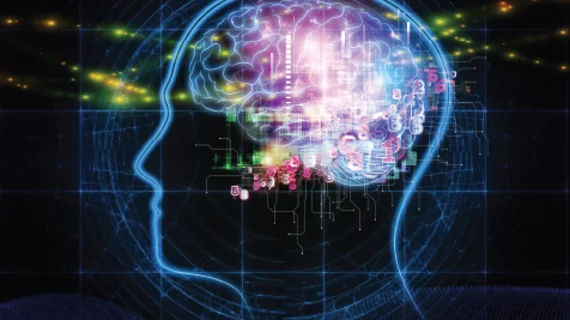Radiologists analyzed gadolinium retention research and identified limitations to our current understanding of gadolinium-based contrast agent (GBCA) retention risks in a recent JAMA viewpoint.
In the U.S., approximately 8.8 million MRI procedures involving gadolinium were performed in 2016, wrote Deborah Levine, MD with Beth Israel Deaconess Medical Center in Boston, and colleagues. However, understanding of the risks associated with GBCAs remains limited.
“Contrast-enhanced MR examinations are a crucial part of the imaging armamentarium for diagnosis and follow-up of many disease processes,” Levine et al. argued. “The benefits of contrast-enhanced MR are widely recognized; thus, it is essential to better understand the potential risks.”
Research attempting to better explain those risks can “oversimplify” the problem, the authors noted. For example, they pointed to mouse studies. In those animals, more than 99 percent of GBCA is excreted primarily through urine tracts within 24 hours. However, in humans, that figure can range from 73 to 99 percent, with the small excreted amount potentially retaining in tissue.
Knowledge of in vivo tissue distribution and the chemical identity of retained gadolinium is also poor. But, most importantly, the authors wrote, biological activity data and toxicologic potential of retained substance remains widely misunderstood.
Levine and colleagues also expressed concern with a lack of knowledge relating to GBCA impact on three distinct vulnerable populations: patients who receive frequent MRIs using GBCA, fetuses and children exposed to GBCA, and patients with bone conditions such as osteoporosis who may be at increased risk of gadolinium storage.
How to gain a better understanding of GBCA?
For one, Levine and colleagues suggested looking to the recently released research roadmap created by international researchers which highlights knowledge gaps in GBCA research, presenting solutions and research pathways.
The group also suggested informatics approaches which draw on preexisting clinical databases may pinpoint unknown risk factors and simultaneously pave the way for “targeted registries incorporating prospective standardized assessment of neurocognition and symptoms,” Levine et al. added.
Overall, the team noted, joint research efforts tackling these issues will ultimately better define GBCA risks.
“Collaborative research efforts are needed to address the gaps in knowledge related to the potential adverse effects of gadolinium,” the authors concluded. “Such efforts will help quantify the risk-benefit ratio for GBCAs and determine what clinical risks, if any, are associated with chronic gadolinium exposure in human tissues.”
Related MRI Contrast Agent Safety Content:
A deep dive into gadolinium-based adverse reactions
Allergic reactions to iodinated CT contrast increase likelihood of sensitivity to GBCAs
Researchers detail data on gadolinium-related adverse reactions
Radiologists must take a data-driven approach to discuss gadolinium, mitigate liability risk
Radiologists see potential to reduce GBCA administration with new synthetic MRI technique
Gadolinium-based contrast agents are safe, even at higher doses, new research suggests
Gadolinium debate rages on, with radiologist questioning recent GBCA liability guidance
ACR committee proposes new term for symptoms associated with gadolinium exposure
Radiologists find direct evidence linking gadolinium-based contrast agent to higher retention rates
AI software that eliminates need for gadolinium contrast during imaging exams wins patent
Research may offer new method to detect GBCA on MRI
Radiology, other multispecialty groups urge caution with GBCAs during interventional pain procedures
Cardiac MRI contrast agents are low-risk and safe for ‘overwhelming’ majority of patients
Health orgs publish special report about gadolinium retention, GBCA use in imaging
Rodent brains retain gadolinium after repeated administration of GBCA a year after injection
Advanced MRI mapping spots traces of gadolinium in the brain invisible during conventional scanning
Radiologists should keep patients’ best interests in mind to mitigate gadolinium liability risk

